Classification of sinks by type of installation
There are four main options:
Hanging
This is the most common type. Brackets are attached to the wall, on which the bowl of the sink is fixed. A cupboard can be installed under the bowl. The sink can also be fixed using consoles.
Recessed
This type of sinks will help organize additional space for storing necessary things, reliably hide wiring. The bowl of the sink crashes into the countertop of the cabinet, table or console. Moreover, there can be two methods of insertion - the edges of the bowl are flush with the tabletop or with the sides when the bowl protrudes slightly.
The installation has a number of advantages compared to other options for attaching the sink bowl:
- the possibility of unusual interior solutions, custom design;
- an easy way to install and mount, and the stand for installation can be either purchased or made with your own hands;
- organization of additional storage space, more rational use of space;
- the price of mortise models is lower than similar invoices.
Pedestal ("tulip")
Installation is made on the "leg", where the eyeliner is hidden. Herself "leg" can be half open - from the side facing the wall, and in this case it is already a half-pedestal.
Bowls
Recently, shell-bowls, which can have a different shape, from a ball to a cube, have been popular. They are mounted on a countertop.
Classification of shells by material
The choice of material for the bathroom sink is very wide. These are not only familiar porcelain and faience, but also rare, original options like wood or glass. Of course, the quality of the materials directly affects the operational properties of the sink, so consider them in more detail.
Faience, porcelain, ceramics
The most common shell materials. Differ in the low price, long term of operation, simplicity in leaving, environmental friendliness. A rather significant disadvantage of faience is porosity, so they are glazed during the manufacture of sinks so that dirt is not clogged in the pores, which is almost impossible to wash. Porcelain sinks do not have this drawback, but they have a higher price. Both porcelain, earthenware, and ceramic sinks are heavy and quite fragile, which requires enhanced fastening and careful handling.
Fake diamond
In terms of quality, the sink made of artificial stone surpasses analogues from natural material. Natural stone is quite fragile and very heavy; moreover, it is necessary to make products from it manually, which makes them expensive.
Artificial stone consists of a polymer and a natural material filling it. Adding pigments allows you to get almost any color. The production of sinks is carried out by injection and molding method, which reduces the cost of the final product. Such sinks are much lighter than natural stone products, much stronger, they are easier to care for, they are not afraid of temperature changes and the action of aggressive chemicals.
Advantages of artificial stone sinks:
- The price is much lower than that of natural analogues, while outwardly they are almost indistinguishable.
- The surface of the sink is perfectly flat, which is very difficult to achieve when using natural stone.
- Low porosity helps the sink stay clean for a long time and makes it easier to care for.The porosity of natural stone is much higher, which means that the sink from it will have to be thoroughly washed almost every day.
- Artificial stone is a hygienic material that does not retain moisture.
- If a chip forms on the sink, it can be masked by special means.
- An artificial stone sink will not lose its operational qualities and appearance for a very long time, several decades.
Glass
Of all types of bathroom sinks, this one is the most unusual and even causing some concern. Glass is a brittle material that, when broken, forms sharp fragments, so at first glance it seems rather unsuitable for use in the bathroom.
But in fact, tempered glass of increased thickness (at least 15 mm) is used in a special way for the manufacture of glass sinks. In addition, in the manufacture of such glass, additives are added to it that increase mechanical strength. Such a sink is not afraid of accidental blows and can last for decades. Glass models are usually mounted on countertops rather than wall mounted.
The main advantages of glass sinks:
- Resistance to mechanical stress is not lower than that of standard faience models, and the appearance is much more attractive.
- Not afraid of temperature changes.
- Owing to transparency, they do not clutter up the space of the bathroom, as if “dissolving” in it.
- The washbasin, even of a considerable volume, seems much smaller than its actual size due to the properties of glass.
- Appearance does not change when exposed to aggressive chemicals or cleaning products.
- They are safe to use, since the outer edges of the shell are polished, and if the shell does break, small and non-sharp fragments will form.
- Glass sinks are lightweight, which facilitates their installation.
Glass also has flaws. Glass is a easily soiled material, the sink will have to be constantly washed and cleaned. In addition, cleaning products will have to be selected very carefully: the presence of an abrasive in them can spoil the appearance of the sink.
Tree
Another unusual material for bathroom sinks is wood. The wooden sink looks really very non-standard, and is able to turn an ordinary bathroom into a masterpiece of design art.
Especially suitable are wooden sinks for eco-style, as well as some other interior trends. Its operational advantages are not lower than those of faience: the wood is treated in a special way so that it does not absorb water and dirt. However, wooden sinks have a significant minus: they are very expensive.
Metal
If in kitchens metal sinks have long been familiar, in bathrooms it is still exotic. They are rarely installed, metal sinks are mainly suitable for modern styles, such as high-tech or minimalism. If copper is used as metal, the sink can be used when decorating a bathroom in the loft, country, and some other styles, but this is a much more expensive option than stainless steel.
Caring for a metal sink is simple, the main thing is not to scratch it, do not use abrasives and washcloths from wire, and be sure to wipe it after use, otherwise there will be stains.
Marble
This is a very beautiful and durable material that requires a careful attitude. The marble sink looks luxurious, and is suitable for classic interiors, as well as rooms in the Rococo, Baroque style. There are two main drawbacks: dirt quickly accumulates in the pores of marble, and it deteriorates from aggressive detergents. It is also an expensive option.
Shell classification by shape
When choosing a sink for the bathroom, its shape is of great importance. In addition to traditional rectangular bowls with rounded edges, a wide variety of options have appeared that suit every taste. Sinks are:
- rectangular;
- square;
- round;
- oval;
- angular;
- double;
- asymmetric.
Whatever shape the sink has, its edges are usually rounded for safety reasons when using and for ease of care for it. A classic rectangular sink is the most affordable and common option. It will be appropriate in a spacious and in a small bathroom. Very small rooms are best equipped with corner sinks.
Sinks with pedestals
The sink is mounted on the top of the cabinet, and attached to the wall using mounting holes. If they are absent, then it is necessary to fix the sink to the wall using a mounting adhesive on a silicone basis. The cabinet can be suspended or stand directly on the floor.
Advantages of installing a sink on a pedestal: in small rooms allows you to equip a storage place without taking up additional space; The internal filling of the cabinet can be carried out in different ways, it can be either shelves or drawers or baskets.
Corner Sinks
Of all types of bathroom sinks, special attention should be paid to corner options. They can be of two different types: suspended or mortise. As a rule, corner sinks are small in size, in addition, they are installed in a place that usually remains unused, or which is difficult to use in another way.
- The corner sink makes it possible to save the space of the bathroom, which, as you know, does not happen much.
- In addition to real space savings, the corner sink also provides visual expansion of the room, since it takes up much less space than the standard version.
- A corner sink can be put into a room of any style, you just need to choose the right material for both the sink itself and the mixer for it, and a stand if it is provided.
- The material of the bathroom sinks in the shape of an angle can be any, but faience and porcelain are most often used.
Corner sinks are distinguished by the type of pedestal:
- open (pipes have to be masked additionally),
- "tulip" (the most popular type of triangular shells, pipes are hidden in the "leg" under the sink),
- bowl (the sink is installed on the cabinet).
Bathroom Sink Tips
- The sink should be combined in style with other items in the bathroom, including plumbing.
- There must be a hole for overflow, otherwise unpleasant consequences during operation are possible, in particular, flooding;
- The holes for the faucet on the sink should be located in a convenient place. Perhaps the mixer is not mounted to the sink, but to the wall.
- If the bathroom is large, when choosing a sink for the bathroom, pay attention to the "double" model.
- It is necessary to pay attention to the quality of the painted structural parts: they should not have streaks, stains.
- The quality of the fittings is an indicator of the quality of the entire product. The higher it is, the longer, as a rule, a thing will serve you without changing its appearance.
With all the variety of models of sinks, materials and shapes, faience products are the most popular, as they have no equal in price-quality ratio. In second place - artificial and natural stone, behind them are shells made of composite, glass, metal.

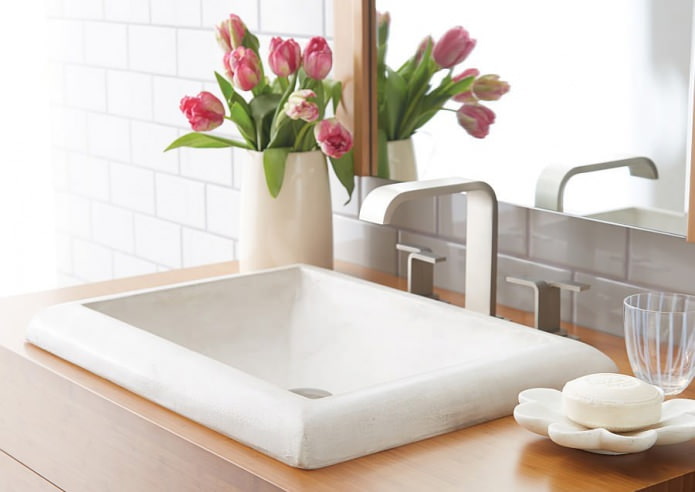
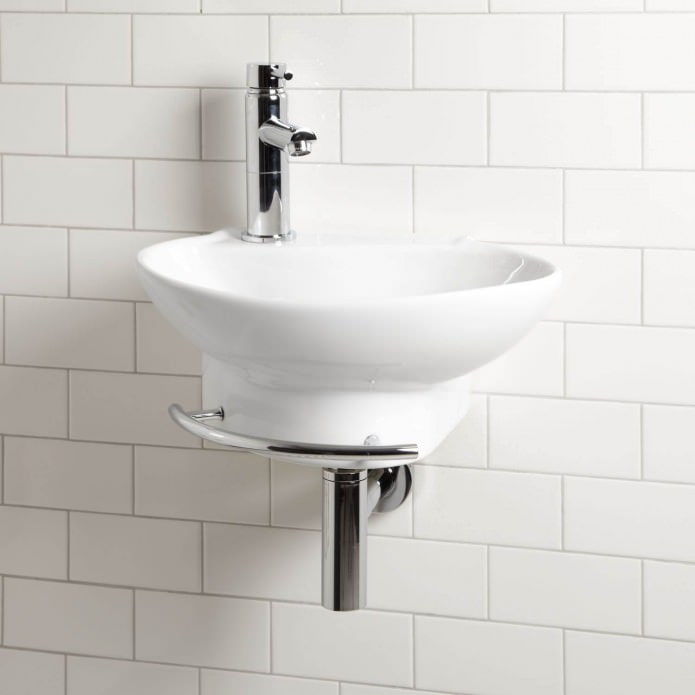
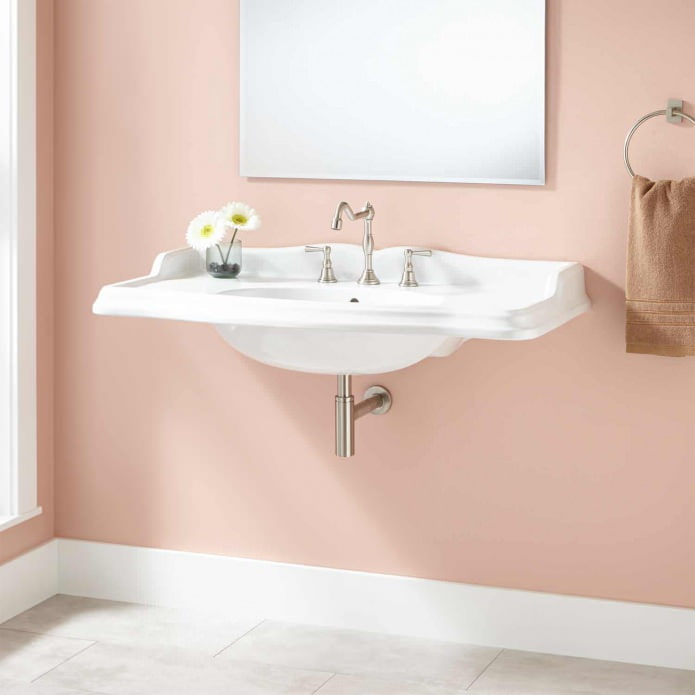

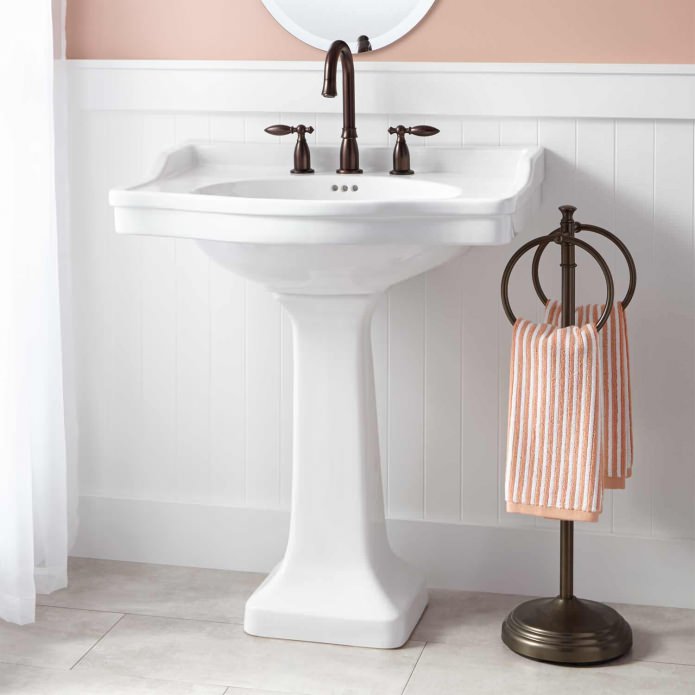
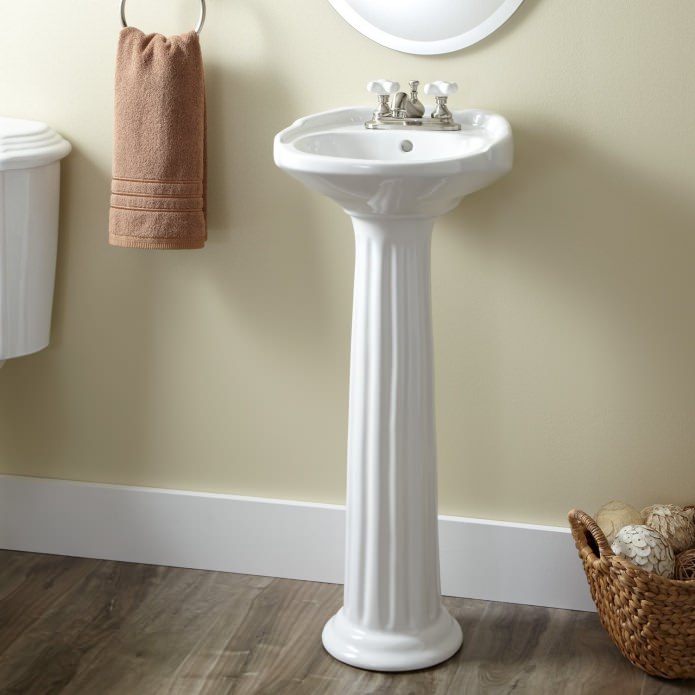



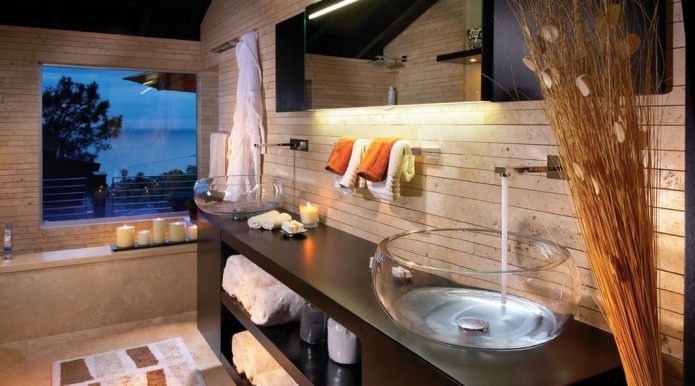

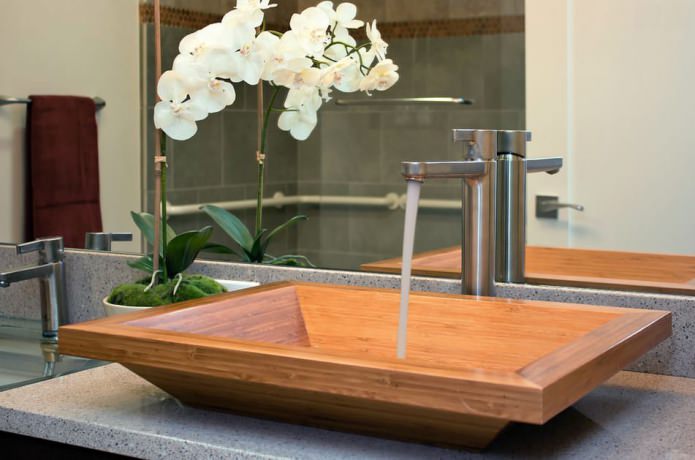
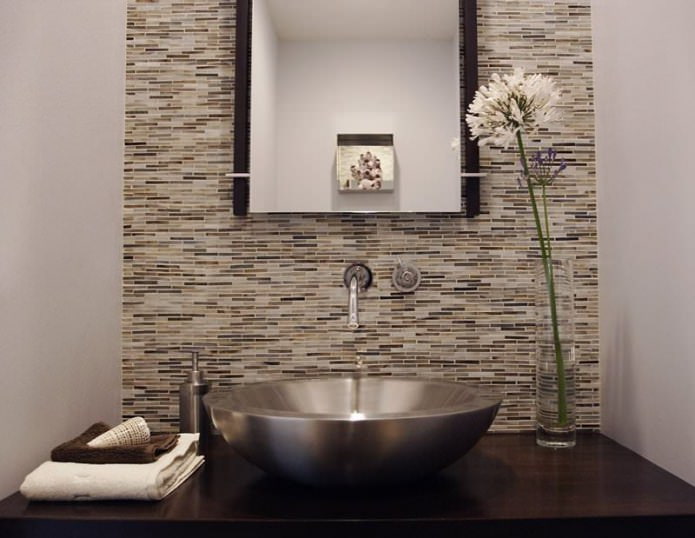
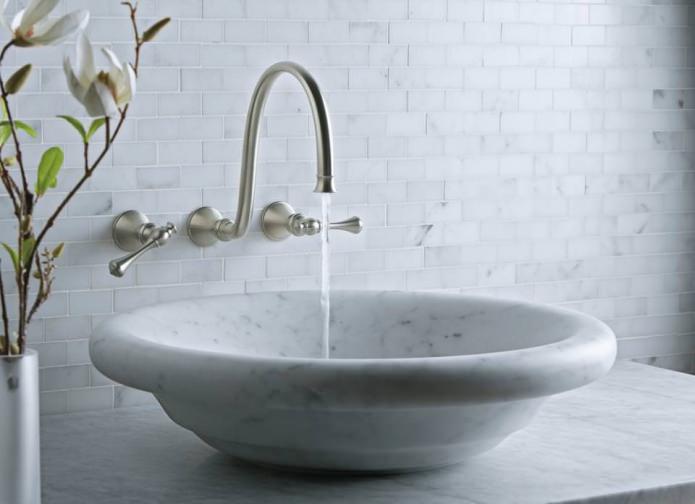
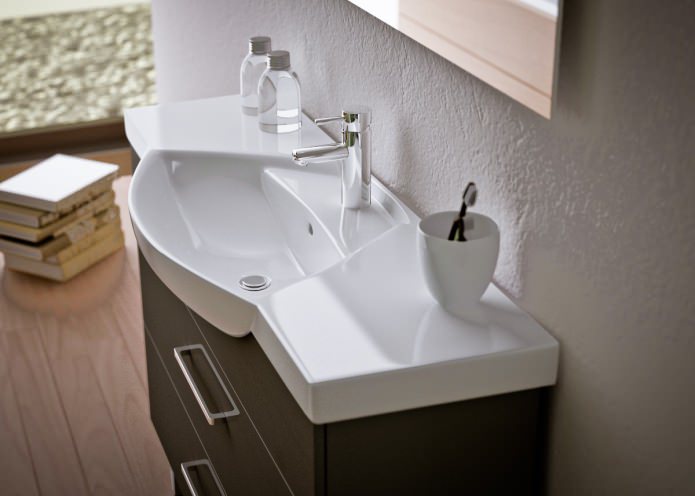
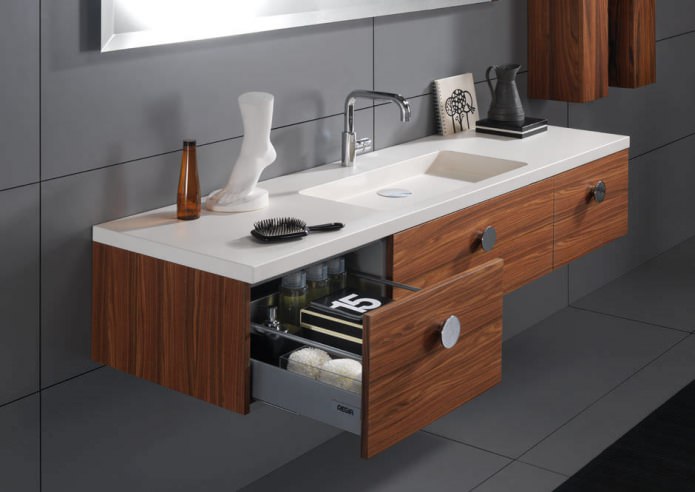

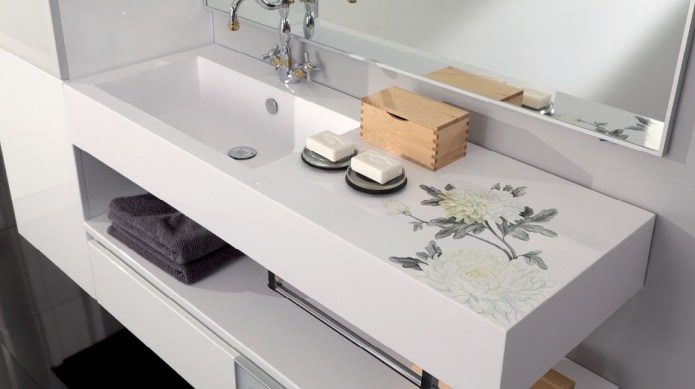

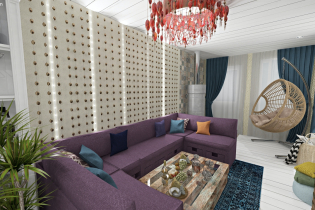 Layout of the apartment: how not to make a mistake?
Layout of the apartment: how not to make a mistake? Stretch ceiling in the bathroom: pros and cons, types, 55 photos in the interior
Stretch ceiling in the bathroom: pros and cons, types, 55 photos in the interior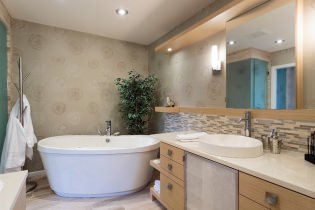 Wallpaper for the bathroom: pros and cons, views, design, 70 photos in the interior
Wallpaper for the bathroom: pros and cons, views, design, 70 photos in the interior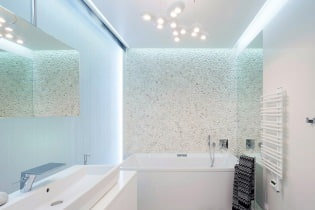 The interior of the bathroom in a modern style: 60 best photos and ideas for design
The interior of the bathroom in a modern style: 60 best photos and ideas for design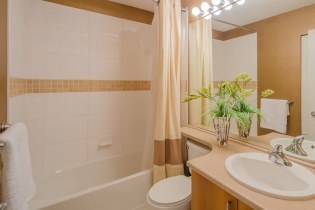 Modern design of a small bathroom: the best photos and ideas
Modern design of a small bathroom: the best photos and ideas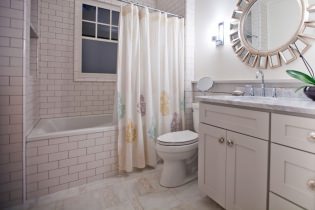 Bathroom blinds: types, materials, mounting methods
Bathroom blinds: types, materials, mounting methods